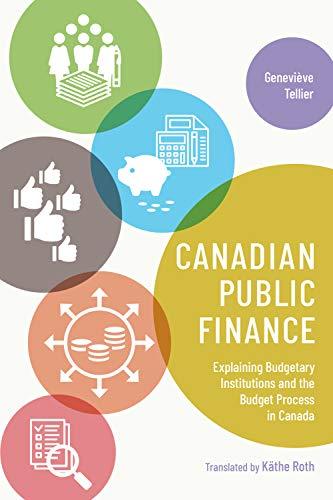Question
Case Analysis 2: Ryan and Nancy Meadows Case 100 Points Ryan 34 years old Engineer for Aero Space, Inc. for 6 years Aero Space has
Case Analysis 2: Ryan and Nancy Meadows Case 100 Points Ryan 34 years old Engineer for Aero Space, Inc. for 6 years Aero Space has a qualified stock incentive program. He will qualify for the program this year. Aero Space has no qualified plan and does not plan to have one Earns $60,000 annually Nancy 32 years old Project manager for Summit Financials for 3 years Has partially vested retirement benefits of $10,800 in the firms pension plan Company has total pension plan invested in GICs. Ryan is the beneficiary. Earns $60,000 annually Ryan and Nancy Married 5 years ago (both for the first time) Dependents: Bryn age 3 and Evan age 2 Ryan and Nancy plan to fund both of the childrens college educations ($10,000/yr.) Both have simple wills with no provisions for guardianships. Ryan and Nancy live well, spending most of their joint income. Nancy is expecting an inheritance of $200,000 in the next 6 months from her aunts estate. Ryan and Nancy Statement of Financial Position Assets Liabilities and Net Worth Cash/checking accounts (JT) $5,000 Mortgage note balance (JT) $157,119 Life insurance cash value1 $2,393 Automobile loan (JT) $20,000 Ascend, Inc. common stock (JT)2 $10,000 Mutual fund (JT)3 $16,000 Total liabilities $177,119 Collectibles (JT)4 $13,500 Pension Plan5 $10,800 IRA6 $5,430 Residence (JT)7 $200,000 Automobiles (JT) $28,800 Personal Property (JT) $65,000 Net Worth $179,804 Total Assets $356,923 Liabilities and Net Worth $356,923 1 Policy is invested in US Large Cap variable account. 2 Stock was purchased on tip for $1,000. 3 Mutual fund is invested in Global Mutual Fund; all dividends and capital gains are reinvested. 4 The collectibles are an inherited stamp and coin collection with some quality stamps. 5 Pensions plan is invested in GICs; Ryan is the primary beneficiary, and the children are the contingent beneficiaries. 6 His IRA is self-directed; Nancy is the primary beneficiary, and the children are the contingent beneficiaries. 7 Replacement cost is $150,000. 8 Mortgage is a 30-year fixed at 5.75% (3 years old). Life Insurance Ryan is insured through his firms employee group term life insurance policy; the current face value is $90,000; the primary beneficiary is Nancy, and the children are contingent beneficiaries. Nancy is insured through her companys group term life insurance policy; the current face value is $120,000; Nancy also owns an individual variable universal life policy with a face value of $75,000. Ryan is the primary beneficiary on both policies, and the children are contingent beneficiaries. They both feel they need additional life insurance. Nancy feels she needs an additional $275,000, and Ryan feels he needs an additional $400,000. They want life insurance to pay off the existing mortgage at the death of the first spouse (first-to-die-mortgage term). Assume this coverage is also put into effect to answer the following questions in addition to the individual $275,000 and $400,000 of life insurance policies shown above. Part I. Gross Estate Calculation. (20 Points) Answer the following questions. Provide rationale for the selection of your answer. If calculation is involved, please write down each step. Use the Gift tax calculation flowchart provided below to complete the following FIVE questions. Provide rationale for the selection of your answer. If calculation is involved, please write down each step.
1. Jody gifts to her son Sam a stock worth $20,000. Jody bought the stock for $15,000 some years ago. What is the amount of taxable gift? A. $13,000 B. $15,000 C. $7,000 D. $20,000
2. Johns dad Dave purchased a property for $1,500,000 a few years ago. When the property values have declined, he gifted it to John for $1,263,000. John sold the property a year later for $1,100,000. What is the amount of the taxable gift? A. $1,08,700 B. $1,250,000 C. $1,487,000 D. $ 0 E. $1,263,000
3. From proceeding question, how much gift tax did Dave pay? A. $ 0 B. $102,500 C. $107,250 D. $210,000
4. Based on the information in Q#3, what are the income tax implications to John when he sold the property for $1,100,000? A. $ 0 B. $400,000 Long term capital loss C. $1,100,000 Long term capital loss D. $163,000 Long term capital loss
5. John and Jody gave their two kids $78,000 each. They agree to split gift. How much can either of them claim as an annual exclusion for their two children? A. $13,000 B. $26,000 C. $54,000 D. $65,000
Step by Step Solution
There are 3 Steps involved in it
Step: 1

Get Instant Access to Expert-Tailored Solutions
See step-by-step solutions with expert insights and AI powered tools for academic success
Step: 2

Step: 3

Ace Your Homework with AI
Get the answers you need in no time with our AI-driven, step-by-step assistance
Get Started


